In 2011, BioWare’s Dragon Age II portrayed its four main romantic conquests as bisexual, allowing them to be pursued by either the male or female version of main character Hawke. At the time, I was a young, mostly-but-not-completely out gay high school student, and I spent hours each week on the BioWare forums, hoping for some information about which men I’d be able to pursue as I ventured through the fantasy city of Kirkwall. When the game finally came out, much to my delight, there were no restrictions. I wasn’t forced into one choice like I was with the roguish elf Zevran in Dragon Age: Origins, or excluded completely like the first two Mass Effect games.
The approach was met with predictable pushback from bigots, and Lead Writer David Gaider responded to criticisms that the game neglected the “main demographic” of the “straight male” in what became a core text about who deserves to be depicted in video game romances. He wrote:
“The romances in the game are not for ‘the straight male gamer’. They’re for everyone. We have a lot of fans, many of whom are neither straight nor male, and they deserve no less attention. We have good numbers, after all, on the number of people who actually used similar sorts of content in DAO and thus don’t need to resort to anecdotal evidence to support our idea that their numbers are not insignificant… and that’s ignoring the idea that they don’t have just as much right to play the kind of game they wish as anyone else. The ‘rights’ of anyone with regards to a game are murky at best, but anyone who takes that stance must apply it equally to both the minority as well as the majority. The majority has no inherent ‘right’ to get more options than anyone else.”
The idea that romances could be “for everyone” stuck with me, and with the video game industry. Dragon Age II was an early example of what has become colloquially known as “playersexual” experiences, in which every romanceable character is pursuable regardless of your character’s gender. Everyone got an equal piece of the pie. Queer people weren’t relegated to table scraps while straight people got to have a feast. But it turns out, giving everyone all the same options brings its own baggage, and in the years since Dragon Age II, developers are still struggling to find the best approach.
The mother of invention
According to Gaider, while Dragon Age II’s love stories have become a model for inclusive romance design, they originally took this form due to the sequel’s breakneck development timeline.
“We were working on far fewer resources compared to Dragon Age: Origins,” Gaider told Kotaku. “The whole game was gonna be done within a year and a half. So when it came up to how are we gonna do the romances, it was really a matter of economy. We’re gonna have four romances. If we decide to make them sort of a spread of sexualities that are immutable, then there’s no choice for the player. They have one character available to them, and we didn’t like that idea.”
Resource division and lack of choice remains a cloud that hangs over even the biggest games that feature romance. Cyberpunk 2077 has four romance options, each of whom has a defined sexuality that limits them to one version of main character V. The game essentially has a Punnet square that says if you are a man-seeking-man, you get rockerboy Kerry Eurodyne, or a woman-seeking-woman, you get braindance developer Judy Alvarez. Cyberpunk 2077 fleshes out each pairing equally, but it could be argued the lack of choice is equally egregious to one type of player getting more than another.
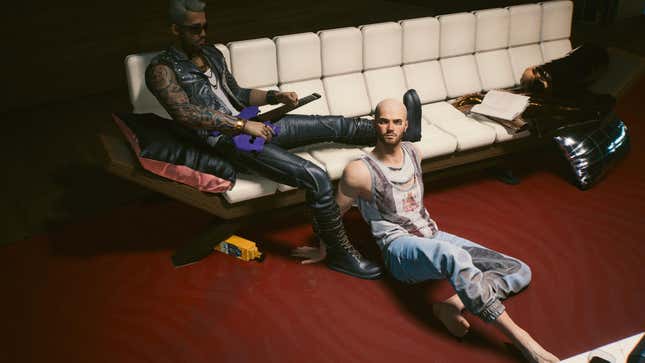
The trade-off here is that a game structured like Cyberpunk 2077 is, theoretically (though there are complications even with that example), better equipped to write around the specifics of a relationship dynamic and identity rather than taking a one-size-fits-all approach for any variation of the player. When every romanceable character is pursuable regardless of who the player is, it creates a perception that these characters’ identities are defined by the protagonist’s presence. Gaider likens this to treating characters like a “toy” just meant to be romanced. This is part of how the “playersexual” moniker came to be, as it implies that characters weren’t bisexual or pansexual, but adhered to whatever main character they came across in any given playthrough.
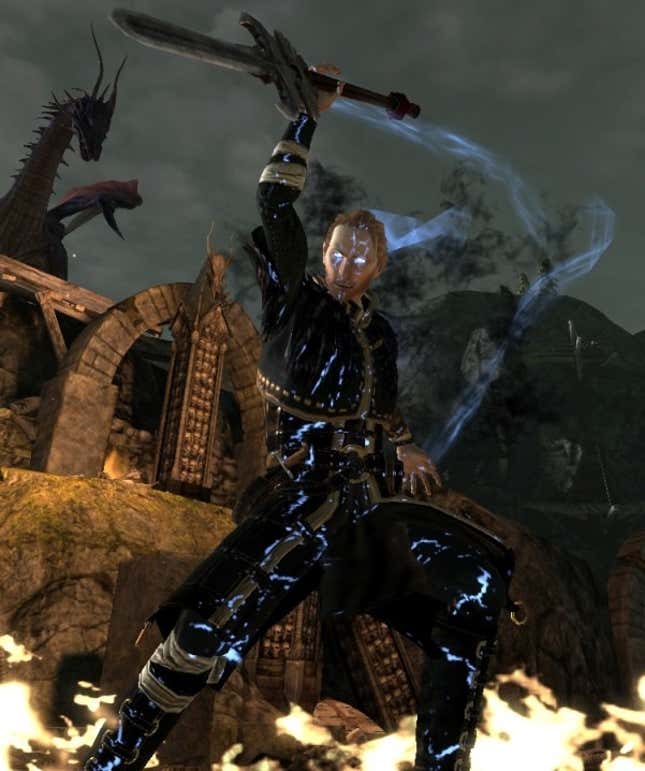
Dragon Age II has a specific plot beat that added to this: If the player chose to play a male version of Hawke, Anders would be forthcoming about his past relationship with another man, but that conversation doesn’t come up when playing as a woman. Gaider explained this was meant to distinguish how Anders related to male and female versions of the same character, with the BioWare team believing he might keep a past relationship with a man “close to his chest” if he were interested in a woman. In retrospect, he says he understands how it could be read as something only real in one version of the story.
“Unfortunately, we just didn’t have enough time to get enough feedback and iterate on those situations,” he said. “We would hit a particular interaction, we would make a judgment call either as a group or the writer on their own, and that was it. There was no time for anything more than one gut-check, which is probably not the way to go.”
Room to explore
While Dragon Age II was written to accommodate any pairing because of the economic realities of its development, it’s become a recurring blueprint for several romance-driven games. Though the cost of game development may be a factor, going the playersexual route has been an important part of the design philosophy of big RPGs like Baldur’s Gate 3, as well as smaller projects like dungeon-crawling dating sim Boyfriend Dungeon or horror visual novel Scarlet Hollow. We reached out to Baldur’s Gate 3 developer Larian Studios for this story, but didn’t hear back in time for publication.
Tanya X. Short, the co-founder of Boyfriend Dungeon developer Kitfox Games, told Kotaku the team decided to make the game’s eight datable characters available to every variation of the player as “a personal almost-vengeance” against more restrictive games in the dating-sim genre. She says a goal was to give players a tool that is more for “self-exploration rather than world exploration,” and the community has been incredibly receptive.
“We get a lot of people who come into our Discord and say that Boyfriend Dungeon helped them discover something about their own sexuality,” she said. “It’s been dozens of people that have come forward and said this. So I assume there’s others who never said anything and I think that’s because it’s so permissive, it really is up to you. It puts the emphasis on the player’s intrinsic motivations of, ‘what do you actually want?’ And for people who aren’t really sure, that can be really powerful because they realize what they want and why they want that.”
For Black Tabby Games’ co-founders Abby Howard and Tony Howard-Arias, the decision to go this route in Scarlet Hollow was made to ensure every run of the game felt complete. Howard says if the player felt gated from storylines based on their gender, that would contradict the game’s philosophy of being reactive to traits and story decisions.
“It would be very unsatisfying for a lot of players, versus exploring the idea of starting a romance with someone who is the same gender and having that be a huge component of it,” Howard said. “If they were to just say, ‘well, I’m not interested in it and you because of something you chose at the beginning of the game,’ it would be unsatisfying and make people feel a little bad.”
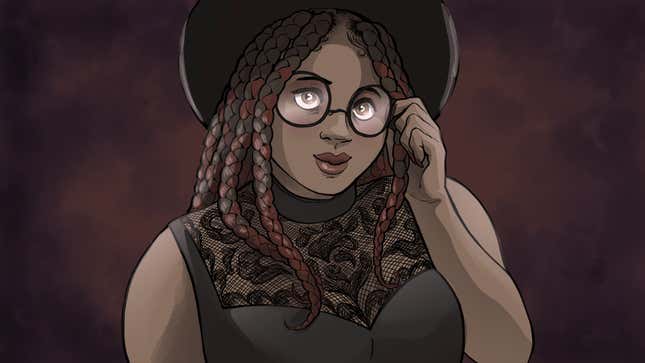
Howard-Arias added that Scarlet Hollow’s consequence system aims to avoid making the player feel like they made a “wrong” decision, and designing with the playersexual philosophy in mind is a key element of that.
“If you extend that design philosophy to romances, it would feel like the game was weighing in and saying like, ‘actually, you’re not the right person for this character, even if they’re the character that you jive with the most,” he said. “Sorry, start over.’ Or if you’re doing a self-insert, ‘be born differently, IRL.’”
From a development perspective, writing and coding a storyline to be accessible to as many players as possible will always be less work. Accounting for branching paths in a choice-based game is always a significant undertaking, romance or not.
“A lot of people jump on choice-driven games for presenting the illusion of choice, or choice not really mattering at the end,” Howard-Arias said. “The fact of the matter is every time that you make a major decision in the narrative, you are doubling your work from there on out if you are going to respect that decision.”
Conversely, writing for more defined sexualities and storylines can also be a simpler approach if the protagonist is more established, as opposed to a self-insert like Scarlet Hollow or Boyfriend Dungeon, as restricting that player choice allows you to design around a universal experience. Dani Lalonders, the lead producer on dating sim ValiDate: Struggling Singles in Your Area, compared it to trying to accommodate a large, diverse gathering of varying tastes with as little pizza as possible.
“So it’s like you’re having a party,” they told Kotaku. “The party has 10 people and all these different people want different pizza toppings. But everyone agrees that cheese is the safest option. So you can either spend more money and spend more time to get everyone the right pizza they want with different pizza toppings, or just get cheese for everyone and everyone’s still gonna eat the cheese regardless. You just write one story where you don’t have to worry about having all these different ins and outs.”
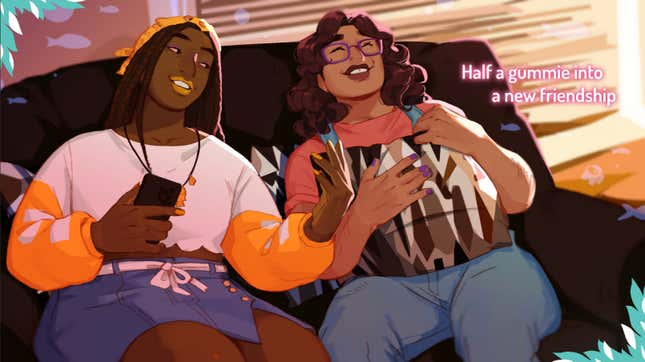
There’s often a perception that player characters who can pursue anyone are inherently bisexual or pansexual, but it’s on the player to roleplay their way through a defined sexuality in the game world—the same way they would in the real one. It’s also on the writers to do right by the subject matter.
“So much of this discussion really just reflects on how good of a writer you are to pull things off like that,” Lalonders said. “For me personally, having a character be bisexual or pansexual is the safest option. I understand that homophobes can get real mad about it, but honestly, who gives a fuck? It’s easier to do that than have your player define it at the beginning, because it kind of limits how much you can expand on it.”
One size doesn’t fit all
In some ways, ValiDate runs counter to the playersexual philosophy. Rather than give players an avatar to embody, the game focuses on specific characters with unique lived experiences. Therein lies the question: What is lost if every romantic interest is for everyone? Whether it’s in dating or in life, a queer person’s experience is different from a straight person’s. But if all a game’s relationships are a one-size-fits-all affair, will they lose the nuance of how different types of people relate to one another? Lalonders said this is a large part of why ValiDate doesn’t allow for players to self-insert and pursue whoever they want.
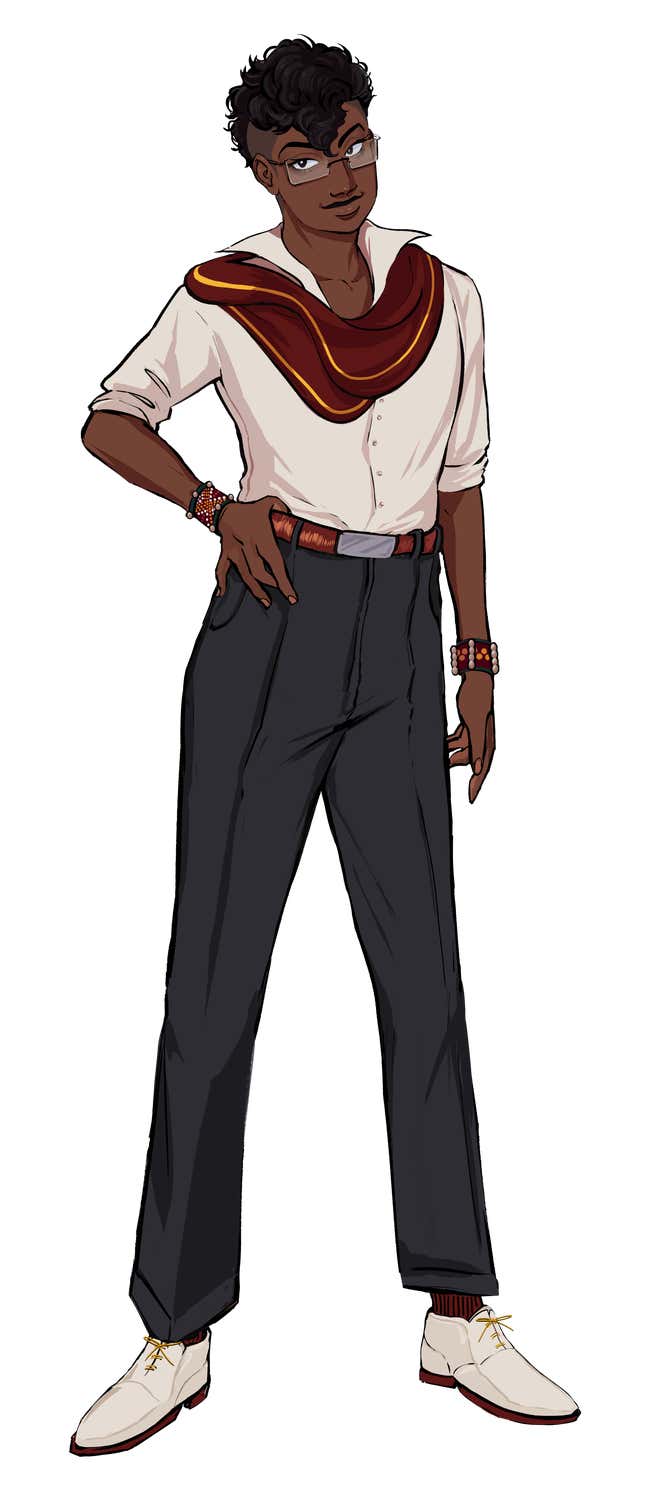
“A big part of [Emhari’s] story is the fact that he’s a lesbian,” they said. “He’s a bigender trans woman, lesbian. We don’t want players to decide that because that is a huge part of their story, and that’s what we want to tell. They’re battling [for] custody with their ex-wife and just lesbian drama at the lesbian bar. That’s the kind of story that we wanted to tell. So we had to make sure we defined it at first.”
Meanwhile, Short says that while Boyfriend Dungeon’s free-for-all dating sim format allowed anyone to see themselves in its love stories, treating those relationships as universal meant the game had its blind spots.
“Maybe it would have been a stronger game if we had acknowledged the player’s gender a little bit more,” she said. “What ends up happening is it feels not only like everyone is a little bit pansexual, but also nobody even sees gender, which is not real. That’s not an authentic way to build the world. There are a couple of times when the way that a character will compliment you depends on your pronouns. But in Boyfriend Dungeon you never actually pick your gender, you just pick your pronouns. That’s sort of indicative of the world in general, but it doesn’t really care. And maybe it should more, to be honest, but here we are.”
As Dragon Age II has been pivotal in discussions around the playersexual design philosophy, its successor Dragon Age: Inquisition has been hugely influential on relationship systems featuring more defined identities. Gaider said the decision to tweak the approach came from a desire to decenter the protagonist in each of these character’s lives.
“We didn’t like how [playersexual] made the characters feel like they existed in service of the player; like they were there in the game to be a toy. […] We felt like that wasn’t why those characters existed. That wasn’t the kind of game we were making. These characters were characters first, and they had their own stories, and the player could interact with them, but it wasn’t always about the player.”
The result of this shift is characters like Dorian Pavus, a mage from the land of the Tevinter Emperium, who is a gay man. His backstory involves nearly being put through a magical version of conversion therapy, an abusive and baseless real-world practice reliant on mental and often religious conditioning. Dorian’s parents planned to use dark magic to make him straight and take part in an arranged marriage, prompting him to run from his family. His story touches on real-life experiences of queer people, and fills in Dragon Age’s world in the process.
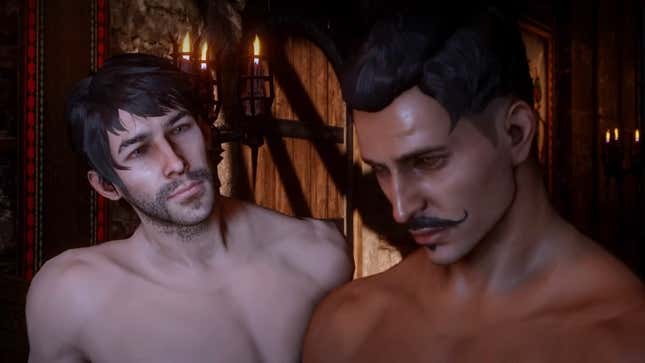
“Dorian’s story could not be told if he was in a game where playersexuality was the rule of the day,” Gaider said. “When I say that it opens up different types of stories, Dorian is the best example, because his story is about being homosexual and that doesn’t work in any other context. So that was very special. […] it meant a lot to me as a gay man that I had this opportunity.”
Defining Dorian as a gay man is intrinsic to his story, but sometimes the effects of this approach aren’t as grandiose. Cassandra, the first party member you get in Inquisition, is a straight woman, and if you flirt with her as a female protagonist, she takes you aside and tells you…well, straight up. Whether that’s a fun wrinkle to your story or feels like the game is gating content is in the eye of the beholder.
“For players who just wanted to romance whoever they wanted, they would do something like encounter Cassandra as a female character and get turned down and be like, ‘that’s not the game I wanted,’” Gaider said. “But then you had other people who were like, ‘that was really cool that Cassandra has her own identity, and it has nothing to do with who the player is.’ I think that makes for more realistic characters, and a more coherent world, and allowed us to create characters that were more self-realized.”
The middle ground between opting for playersexual romances and representing the queer experience is making sure those bisexual and pansexual identities exist whether the player is there or not. Baldur’s Gate 3’s party is a solid example of this. Characters like Gale, Wyll, Astarion, and Shadowheart have established relationships and flirt with others of different genders, regardless of whether the player romances them. This ensures their identity doesn’t come off like a switch to be flipped depending on which protagonist shows up at the beginning of the game. Gaider points out that part of circumventing the weaknesses of the playersexual approach is adding “a metric ton of content” as Baldur’s Gate 3 did. Overcoming those hurdles is “possible, just very expensive.”
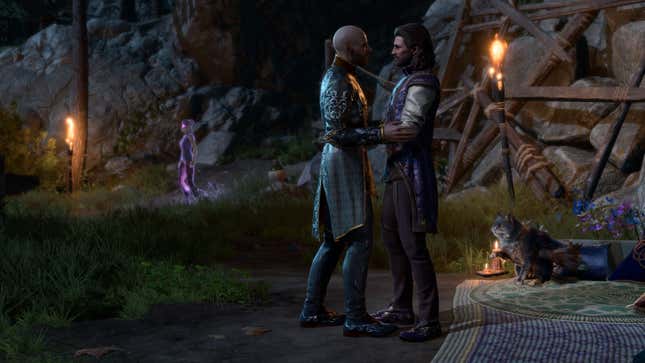
Howard-Arias cited Dorian from Inquisition as an example of a story that could not be told in a playersexual game, but when looking at Scarlet Hollow’s playersexual approach, if the game and its storylines aren’t about identity, does it really add anything to restrict those romances?
“There’s an important question you have to ask around what a given romance is supposed to be about thematically, and there are times where it is about identity. It’s thematically about exploring sexualities that are discriminated against, or exploring a new side of oneself that they might not be aware of. And then there’s romances where that type of identity doesn’t play a strong role. And those are the romances that we prefer to write and frankly, that we’re better equipped to write.”
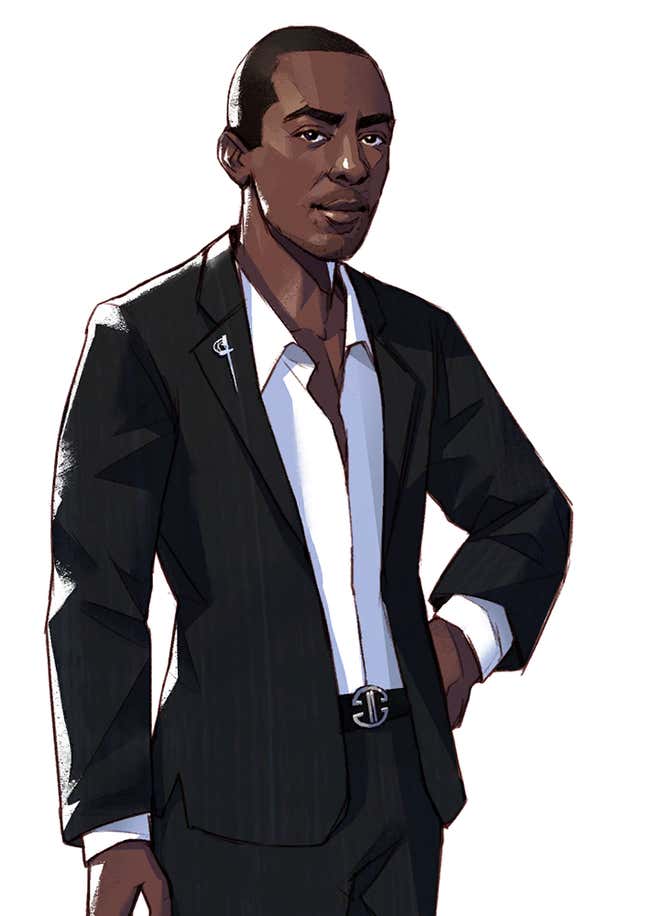
Short echoed the sentiment, saying that once Boyfriend Dungeon was deemed a playersexual game, it allowed the team to write broader-reaching romances.
“Different people love very different ways,” she said. “The way that they express love, the way that they deal with stress in a relationship, how they flirt, how they respond to flirting, like all of those signals. I don’t think I would respond differently whether it was a man or a woman doing those. It’s more about me, and I sort of projected that onto each of my characters. A lot of times it’s about them expressing their personality. It’s really more about what does this person love about the player?”
Conversely, the premise of Sucker for Love: A Date To Die For, an upcoming visual novel based on Lovecraftian horror, is rooted in its main character’s asexual identity. The game follows Stardust, an investigator who is unaffected by the eldritch goddess of lust’s brainwashing. The dating sim elements factor in that two people might be diametrically opposed in terms of how they navigate sex and romance, but can still find common ground and connection.
“You basically have a goddess needing to be rescued by what would be in her religion an utter blasphemer,” lead developer Joseph Hunter told Kotaku. “[You have] someone that is not being lustful, is not having kids. It’s almost like it’s only the Grinch that can save Christmas. It’s only an ace person.”
Hunter said the decision to go with an asexual protagonist was to contrast with the first Sucker For Love game, which starred a straight male protagonist. However, he said the team discussed offering a second playable character that would be a straight male foil to Stardust’s ace lesbian, but came to the conclusion that her identity was too integral to the game’s story.
“That, to me, felt like a betrayal of the character,” he said. “The whole point of me making this character is for you to play as them, not for you to find a middle ground between you and the story.”
What makes a queer game?
The debate raises an interesting question about game design philosophy. What kind of love story are you trying to tell? Is player freedom diametrically opposed to those stories? If someone feels they’re not getting the same options or freedom, it can be a moral dilemma as well as a design one.
When you’re on the outside looking in, it’s tempting to assume developers are intentionally snubbing certain groups of people. The Mass Effect series pushed the envelope for sex and romance in its time, but it was deeply dismissive of queer men, and BioWare’s explanations of Commander Shepard supposedly being a “predefined” character weren’t satisfactory considering the series’ emphasis on choice. Breaking down choices to numbers isn’t telling the whole story, but it does ultimately leave some people feeling burned.
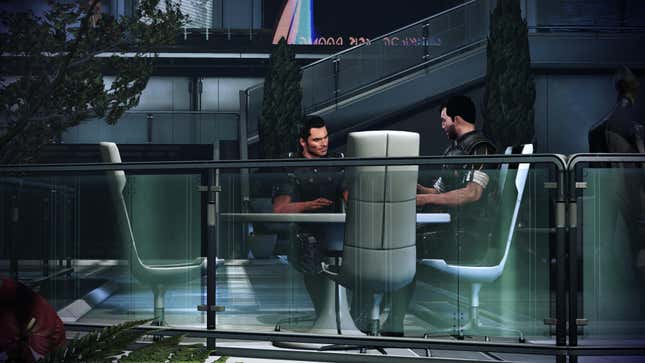
“[Some players reacted to limited romance] like it was unfair that I didn’t get more options, as if in-game romances were a matter of social justice,” Gaider said. “Like, in terms of how fairly you allotted them to players, like candy being divided. It’s such an awkward conversation to have because it’s so removed from the realm of game development. But still, game developers do need to stop and have that conversation.”
That outside perspective is bred by the video game industry’s notorious secrecy, but it can also be traced to media consumption as a form of activism. If a game chooses to not offer all sexualities the same options, is it queerphobic? If a game makes every character available to every version of the player, is that somehow erasing the queer experience? There’s a lot of nuance to those conversations, but the assumption of inherent anti-queer sentiment has made the discussion difficult for some to engage with, even in good faith.
“Whenever online discourse emerges around something like this, people quickly dig themselves into one camp or the other,” Howard-Arias said. “They say, ‘this is the correct way to do this or the other way is the correct way to do it. And anything other than that is wrong, and heaven forbid, immoral.’”
Some of this is rooted in a desire to define a “queer game,” not recognizing that the queer experience is as diverse as the people under the umbrella. Debates about what constitutes a queer experience have plagued communities, especially online, and while it may start as a game design decision, choosing to go the playersexual route (or not) can become ammunition for a debate about what makes games queer enough.

“Once we start defining what is and what isn’t a queer game, it gets a little dicey,” Lalonders said. “Because who are you to tell me my game is not queer? Or tell someone ‘I don’t think your game is queer enough.’ I don’t think it’s productive.”
Even the word “playersexual” sounds like it’s an identity, which can be problematic. Gaider points out this is especially touchy for bisexual and pansexual people, who often face erasure in the real world, so labeling characters as something other than what they actually are sours the discussion before it even starts. Hunter echoed the sentiment, saying having characters “flip flop” felt like a betrayal.
“The difference between a bisexual character versus a playersexual character really is a matter of context,” Gaider says. “By calling a character ‘playersexual,’ you’re sort of erasing the fact that they are bisexual, but, the part where having a term for that becomes useful is when you start to investigate, like, why is this character bisexual?”
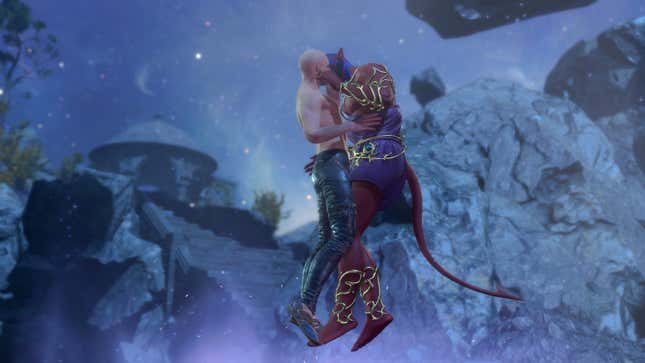
So these two distinct approaches aim to be inclusive, but both can carry a perception of unfairness to either queer identity or queer experience. The sentiment from everyone I spoke to was that both approaches are legitimate; they just have their own pitfalls that anyone making a game should be aware of. Sometimes you just have to accept when one game is aspiring to something different than another. Gaider says the key to making either approach work is to stop trying to please everyone.
“Say something with your writing, with your game, with your romances. Because if you don’t say anything, if your goal is to make it inoffensive, then it’s gonna land like a wet fart. It’s not gonna have any substance to it,” he said. “So say something and just be aware of how it can be interpreted and stand by it. That’s all you can do as a creator.”


